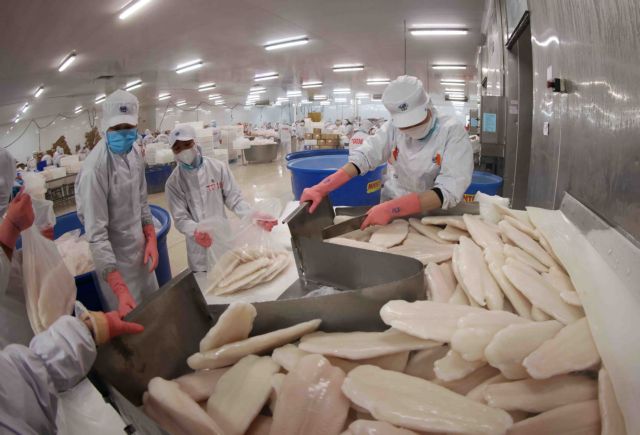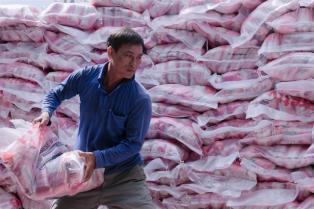Seafood export turnover to the US reached US$905 million in the first six months of the year, marking an impressive growth rate of 17.5 per cent.

HÀ NỘI — Unstable US tariff policies have caused Việt Nam's seafood exports to surge rather than plummet in the first half of the year.
Seafood export turnover to the US reached US$905 million in the first six months of the year, marking an impressive growth rate of 17.5 per cent.
Lê Hằng, deputy general secretary of the Vietnam Association of Seafood Exporters and Producers (VASEP), said that this growth momentum mainly came from businesses rushing to fulfil orders in May, aiming to complete transactions before the US's projected implementation of retaliatory tariffs on July 9.
This short-term acceleration is clearly reflected in monthly data. After stable growth in March and April, exports to the US surged by 61 per cent month-on-month in May.
Immediately afterwards, as the tariff deadline approached and a 'wait and see' mentality prevailed, exports suddenly dropped sharply in June, by nearly 18 per cent year-on-year.
The three main product groups including shrimp, pangasius and tuna, continued to lead, accounting for 77 per cent of total turnover with a value of over $700 million.
A notable development is the shift in market rankings. Once the leading market for many years, the US now accounts for only 17 per cent of the market share, losing its top position to China, which imported $1.1 billion of Vietnamese seafood, a sharp increase of 45 per cent compared to the same period last year.
Hằng said: "This is considered an inevitable consequence of an unstable trade environment due to US tariff policies.
"Since April this year, the Trump administration has continuously used retaliatory tariffs as a negotiating tool, issuing a series of announcements and rapid changes in tariff rates, implementation times and affected parties."
Initially, the tariff roadmap was set for July 9, but just before that date, Trump unexpectedly announced a postponement to August 1.
Not only the timing, but the tariff rates also changed constantly, she noted, as quoted by Doanh Nghiệp Việt Nam (Vietnamese Enterprises) Magazine.
These continuous changes had pushed businesses in both countries into an unprecedented uncertain business environment, said Hằng.
US importers were "on tenterhooks" because they could not determine the final cost of shipments. Meanwhile, Vietnamese exporters also faced difficulties in adjusting prices, finalising delivery times and building long-term production plans, she noted.
For a sector heavily influenced by seasonality and logistics costs like seafood, this instability escalated financial risks and led to chain reactions from farming areas to processing plants, she added.
Facing a new, unexpected and unpredictable trade order, Hằng believed that Vietnamese seafood businesses had no choice but to proactively restructure their strategies.
One of the top solutions would be market diversification, avoiding over-reliance on the US market.
Simultaneously, businesses should intensify exploitation of markets with Free Trade Agreements (FTAs) such as the CPTPP bloc, the European Union (EU), and South Korea. Optimising the supply chain to minimise logistics costs and risks was also an urgent requirement, said Hằng.
The VASEP deputy general secretary also emphasised the importance of transparent traceability and origin of raw materials.
This is a crucial factor as retaliatory tariff policies were increasingly tied to criteria regarding the origin of goods, according to Hằng.
Businesses need to ensure that the entire supply chain, from raw materials and processing to export, is closely monitored with complete records to prove legal origin, avoiding the risk of being accused of "tax evasion" or "illegal transhipment."
Additionally, applying technology and digital transformation, from electronic traceability to smart order management, will help businesses enhance their ability to react quickly to policy and market fluctuations, allowing for flexible adaptation in the new context. — VNS






